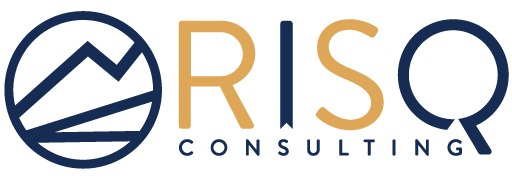Employer Takeaways From the Speak Out Act
This article is from RISQ Consulting’s Zywave client portal, a resource available to all RISQ Consulting clients. Please contact your Benefits Consultant or Account Executive for more information or for help setting up your own login.

On Nov. 16, 2022, the U.S. House of Representatives passed the Speak Out Act, prohibiting courts from enforcing nondisclosure and nondisparagement clauses between employers and their employees and independent contractors that were in place before sexual harassment and assault disputes. The U.S. Senate signed the bill on Sept. 29, 2022. President Joe Biden has indicated his support for the law, so it’s likely he will soon sign the bill into law. As the law will take immediate effect once signed, employers need to understand how the Speak Out Act may impact them in order to adequately prepare their organizations.
This article explains the Speak Out Act and outlines steps employers can take to prepare and protect their organizations.
What Is the Speak Out Act?
The Speak Out Act is part of a recent bipartisan effort to curb unprofessional and illegal workplace behavior. The U.S. Congress found that 81% of women and 43% of men have experienced some form of sexual harassment or assault throughout their lifetime. Additionally, 1 in 3 women have faced harassment in the workplace, and approximately 87% to 94% of those who experience sexual harassment never file a formal complaint.
Congress also found the following when drafting the bill:
- Sexual harassment and assault remain pervasive in the workplace and throughout society, affecting millions of individuals.
- Sexual harassment in the workplace forces many victims to leave their occupations or industry or pass up opportunities for advancement.
- Victims and survivors of sexual harassment and assault must be able to report and publicly disclose the incidents to combat this abuse.
- Nondisclosure and nondisparagement provisions in agreements between employers and their current, former and prospective employees and independent contractors can perpetuate illegal conduct. They silence victims and survivors of sexual harassment and assault, enabling perpetrators to continue their abuse.
- The prohibition of nondisclosure and nondisparagement clauses will empower survivors to come forward, hold perpetrators accountable for their abuse, improve transparency around illegal conduct, enable the pursuit of justice and make workplaces safer and more productive for all workers.
The bill follows the Ending Forced Arbitration of Sexual Assault and Sexual Harassment Act, which was enacted in February 2022 and invalidated mandatory pre-dispute arbitration agreements in cases of sexual harassment and assault.
The Speak Out Act would render void any pre-dispute nondisclosure and nondisparagement provisions between employers and employees involving sexual harassment and assault. It only prohibits the enforcement of agreements entered into before a dispute arises, such as agreements made at the start of employment. This bill would apply to current, former and prospective employees as well as independent contractors.
The bill does not define “disputes,” so it’s unclear whether the prohibition of nondisclosure and nondisparagement contract clauses would apply only to formal litigation or to informal complaints as well. Additionally, it defines nondisclosure agreements broadly to include any contractual provision requiring a party not to disclose or discuss conduct or information covered by the terms and conditions of a contract or agreement, including the existence of a settlement.
The act would not prevent employers from entering into standard confidentiality agreements—which prevent one or both parties from revealing information about resolved claims or settlements—with employees when settling claims or demands of sexual harassment or assault. However, some states and localities have enacted laws restricting confidentiality agreements involving sexual harassment and assault claims. The Speak Out Act would not interfere with those existing laws, and it would allow other states and localities to create more restrictive laws regarding nondisclosure and nondisparagement agreements. It may also affect arbitration and grievance procedures established in collective bargaining agreements.
Considerations for Employers
As the Speak Out Act will take immediate effect once signed into law by the president, employers should consider taking action now to make certain they comply with the new law’s requirements. Employers should consider taking the following actions to prepare and protect themselves:
- Review existing employment agreements. Employers should review their preemployment and standard employment agreements to ensure they meet the act’s requirements. If employers rely on independent contractors, they should do the same for their independent contractor agreements.
- Protect business interests. If employers use nondisclosure agreements to protect trade secrets, proprietary information and confidential data, they should consider working with local legal counsel to confirm their agreements are drafted in a way that complies with the bill while protecting their organization’s legitimate business interests.
Additionally, employers can avoid issues related to the new bill by preventing sexual harassment and assault from happening in the workplace. Employers can implement the following strategies to combat sexual harassment and assault at work:
- Verify workplace policies comply with current employment laws and regulations.
- Provide employees with copies of the employee handbook or workplace policies.
- Train managers to recognize and address issues involving sexual harassment and assault.
- Educate employees on proper workplace behavior.
- Investigate any complaints or issues of sexual harassment and assault promptly.
- Enforce workplace policies consistently.
Evaluating employment agreements and workplace policies will enable employers to protect and strengthen their organizations by complying with current employment laws and providing employees with a safe work environment.
Summary
Support for ending mandatory arbitration and nondisclosure agreements in the workplace has been on the rise. The Speak Out Act is intended to allow victims of sexual harassment and assault to speak publicly in order to prevent perpetrators from continuing to harm people. Understanding the bill can aid employers in preparing for the law’s enactment as well as establishing policies to protect employees from sexual harassment and assault.
For more HR-related resources, contact RISQ Consulting today.
- Published in Blog
Fire Safety in the Office
This article is from RISQ Consulting’s Zywave client portal, a resource available to all RISQ Consulting clients. Please contact your Benefits Consultant or Account Executive for more information or for help setting up your own login.
Fires are a serious risk for businesses of all types. It’s up to you to take the proper precautions to keep yourself, your co-workers and our company safe from fire hazards.
Lower the Risks of Fire
There are some simple things you can do to prevent fires at our company:
- Always comply with regulations.
- Obey “No Smoking” signs.
- Dispose of cigarettes and matches in the proper receptacles after ensuring they are completely extinguished.
- Watch for frayed electrical cords and overloaded circuits.
- Dispose of flammable wastes and scraps by placing them in metal containers.
Combustible Storage
Always store combustible materials in a safe area. Fumes can travel a considerable distance and become ignited by a furnace, stove, electrical equipment or even a lit cigarette. If you need to dispose of flammable liquids, do not pour them down the drain. Educate yourself on the proper method of disposal.
If you have to burn wastepaper, make sure it doesn’t contain explosive materials, such as aerosol or paint.
Inspect Equipment Regularly
Proper maintenance procedures are important to fire safety. If you use electrical equipment or tools, inspect them regularly to make sure they are working correctly. Keep mechanical equipment properly lubricated to avoid excessive friction. Keep spark arrestors on exhaust systems.
Preparing for a Fire
- Become familiar with the location and operation of firefighting equipment.
- Learn where fire extinguishers are located and what types of fires they are to be used on.
- Participate in periodic fire drills to practice fire response procedures.
- Become familiar with the different types of alarms used in your workplace.
- Establish an employee meeting place.
When a Fire Breaks Out
- If the fire alarm rings, always treat it as a true emergency unless you are told ahead of time it is a drill. Just because you do not see smoke or flames does not mean a fire is not present.
- Always use the stairs instead of the elevator.
- If the room fills with smoke, stay low to the ground and get out as fast—but as safely—as you can.
Every day you’re on the job, take note of potential fire hazards and report them immediately to your supervisor. Always put safety first!
- Published in Blog
Zodiac Signs in the Workplace
By Taylor Brouillet-Stock, Account Specialist
Have you ever had an instance when you didn’t get along with a coworker? Well, maybe it was because they’re a Taurus and you’re an Aries! Just kidding, that’s not entirely how astrology works. Astrology has become a contentious topic of discussion as its popularity has grown over the years. People often wonder, does astrology somehow control our fate? Or is this just a bunch of bologna? Whether you believe in astrology or think it’s straight up nonsense, it can be a very interesting topic to learn about and can invite us to learn more about ourselves and others (like the people we work with). Plus, it’s just plain FUN!
Check out below what your zodiac sign is along with a few strengths, weaknesses, and general overview of each sign in the workplace.
Aries (March 21-April 20)
- Strengths: Courageous, confident, determined, passionate, energetic
- Weaknesses: Impatient, short-tempered, impulsive
- In the workplace: Aries are the first of the zodiac, therefore, they have a desire to be first at everything and are natural born leaders who are fiercely competitive. In the workplace, they are often gamechangers and are a great force. However, it can be important for this sun sign to remember to be patient and to not overstep boundaries.
Taurus (April 21-May 21)
- Strengths: Patient, reliable, responsible, practical
- Weaknesses: Stubborn, possessive, greedy
- In the workplace: People born under this sun sign are often known as “the rock of the workplace”. They value their security and stability and are known for being dependable and reliable in the workplace. You can typically count on a Taurus to be unfazed by potential emotional turmoil that may easily cloud other’s vision.
Gemini (May 22-June 21)
- Strengths: Curious, adaptable, versatile, intellectual
- Weaknesses: Inconsistent, indecisive, superficial
- In the workplace: Geminis have been known to be “the most delightful to work with”. This sun sign is ruled by Mercury, so they value communication. The symbol of Gemini is the “twins”, which can make them seem “superficial” at times as they may act different in different surroundings. However, it’s important to keep in mind that this sign is very adaptable to its surroundings and can vibe with anyone.
Cancer (June 22-July 22)
- Strengths: Loyal, sympathetic, persuasive, imaginative
- Weaknesses: Manipulative, pessimistic, clingy
- In the workplace: Cancers are very much in tune with their own emotions, as well as other’s emotions which can make them a very caring co-worker. The symbol for Cancer is a crab, which reflects how Cancers can sometimes be very guarded (like how a crab’s shell provides protection) which makes it hard to let their true personality shine through.
Leo (July 23-August 21)
- Strengths: Generous, humorous, cheerful, creative
- Weaknesses: Arrogant, bossy, inflexible
- In the workplace: Leos are often known as the “king of the office jungle” as their symbol is the lion. Leos thrive on the energy of others and have the ability to bring their own enthusiasm to the workplace. Leos are ruled by the Sun, so they are the center of their own universe which can make it quite easy to bruise a Leo’s ego.
Virgo (August 22-September 23)
- Strengths: Analytical, hardworking, practical, diligent
- Weaknesses: Shy, overly critical of self and others, perfectionist
- In the workplace: Virgos are known as the “diligent, silent soldiers” in the workplace. They are intelligent, however they typically over-think, over-worry, and over-work themselves. In addition, Virgos can sometimes come off as very critical of others.
Libra (September 24-October 23)
- Strengths: Cooperative, fair-minded, diplomatic, easygoing
- Weaknesses: Avoids confrontations, indecisive, holds a grudge
- In the workplace: The symbol for Libra is the scales and because of this, Libras value justice and balance. They are often known as the “unifying force of justice” in the workplace as they are usually unbothered by others and are known to be unbiased and very fair. However, at times, a Libra’s confidence in their judgment can be overpowering and can end up clouding their judgment.
Scorpio (October 24-November 22)
- Strengths: Brave, passionate, resourceful, determined
- Weaknesses: Jealous, secretive, distrusting
- In the workplace: Just like a scorpion (the symbol for this sun sign) Scorpios are the people at work that you don’t want to mess with. However, on the plus side, they can accomplish anything due to their drive, determination, passion, and their resourcefulness.
Sagittarius (November 23-December 22)
- Strengths: Generous, idealistic, optimistic, straightforward
- Weaknesses: Impatient, careless, irresponsible
- In the workplace: Sagittarians have been known to be a “ray of sunshine in a windowless office”. They are often very optimistic and adventurous. However, there are times when this sun sign takes things too far and can get caught up pursuing a good time.
Capricorn (December 23-January 20)
- Strengths: Responsible, disciplined, practical, careful
- Weaknesses: Pessimistic, know-it-all, unforgiving
- In the workplace: Capricorns are often very efficient and helpful in the workplace. You can count on them to be responsible and practical. Capricorns value stability and order which is often reflected in their work. At times, Capricorns may come off as a know-it-all, however they just might actually know it all.
Aquarius (January 21-February 19)
- Strengths: Independent, humanitarian, original, progressive
- Weaknesses: Avoids emotional expression, temperamental, uncompromising
- In the workplace: Aquarians are known as one of the most “good-natured of the bunch”. Due to their independence and originality, they often isolate themselves and they have sometimes been known to set double standards.
Pisces (February 20-March 20)
- Strengths: Compassionate, artistic, gentle, wise, intuitive
- Weaknesses: Overly trusting, fearful, desire to escape reality
- In the workplace: Pisces are the “babies” of the zodiac signs and are often a “mix” of all zodiac signs. This makes Pisces very intuitive of others which can them more aware of how other people are feeling. Like Cancer, this makes for a very caring and emotionally intelligent co-worker.
So, what does all this mean? Well, that’s for you to decide! It Of course, this is a very general overview of each zodiac sign, and it may not reflect exactly who you are as a person. If you want to learn more, I suggest doing more research into your sun sign (and possibly your entire birth chart, but that’s a whole different conversation).
Whether you believe any of this to be true or not, it’s always beneficial to seek a greater understanding of our strengths, weaknesses, and how we may act in the workplace. It can also help to understand our coworkers better, which may help to create better relationships with those people. Let’s be honest, if you’re going to spend 40 hours a week with people, don’t you want to get along with them? Even if they are a Taurus and you’re an Aries…
Websites used:
https://www.monster.com/career-advice/article/astrology-sign-work-life
- Published in Blog
Expectation vs. Reality – The Digitization Dilemma
By Andrew Kupperman, Employer Services and Workforce Technology Consultant
When an Employee starts working with an Employer, there are a variety of different expectations that go into forming that Employee/Employer relationship. For example, the Employer is going to expect the Employee to show up to their job and do the work asked of them. Correspondingly, the Employee is going to expect to be compensated for the work that was asked of them. These are the basic expectations at the heart of every Employee/Employer relationship, but they set a very important tone for all other expectations derived from this ongoing relationship.
Additional relationship building expectations include the Employer providing the Employee the tools, resources, and training to be able to do the work that is asked of them. In many organizations, one tool in particular – technology – often creates friction in the Employee/Employer relationship. There are a lot of reasons why this occurs.
CAPABILITIES
Workplace technologies don’t typically have comparable capabilities to the technology we all use daily in our personal lives. In fact, when looking at some capabilities in workplace technology, you could probably go back 5, 10, or even 15 years to see those capabilities being released for personal use. Don’t get me wrong, I know there are thousands (yes thousands) of technology vendors trying to close this gap for workplace technology, but because these gaps still exist, there is a gap that exists in what the Employee expects from their Employer, which can strain the relationship. This is especially true for younger workers just entering the workforce.
BRIGHT SHINY OBJECT SYNDROME
More often than I’d personally like to see, organizations decide to purchase and implement new technology just because of a cool demo someone saw. A word to the wise: the demo isn’t how your organization is going to receive that technology out of the gate – it needs to be built and implemented in order to eventually get there.
If you’ve ever seen Jason Averbook speak (the CEO and Founder of Leapgen, an organization that consults around workforce technology with Fortune 500 and very large global organizations as well as a thought leader in workforce technology space), he often discusses the difference between implementing technology and an organization successfully digitizing its processes. He uses a formula to describe that the digital equation for success includes 20% organizational mindset about digitizing, 25% of the people (ie: Employees) involved in using technology, 45% of understanding and aligning processes, and only 10% of the actual technology system, which is just the tool being used.
I know organizations want to be able to adopt and use technology like we do in our personal lives. But most organizations are big, clunky, and slow moving, so it’s hard to just try out a new technology tool and then scrap it a few days later because you don’t like it (like we do with apps on our phone). In most organizations, operating in such a manner would be fiscally irresponsible and cost them tens of thousands of dollars annually, if not more.
OWNERSHIP
Lastly, an organization leadership often owns the technology selection, implementation, and workflow processes. Again, there is an expectation in the Employee/Employer relationship here, as the Employer provides the Employee with the technology. There will be times that the leadership delegates these components to different areas of the business (for example when looking at finance, HR, or operational technologies). However, in doing so, they unknowingly create silos within the organization and don’t strategically think about how adopting these new technologies can impact other areas of a business.
An even more unfortunate scenario is when only one or two of those components are delegated (maybe the implementation or workflow processes). By not including key stakeholders in the selection process, an organization opens itself up in failing to meet the goals set out for adopting that technology. I understand and agree that the leadership often needs to be involved from a budgetary standpoint, but by not looping in those stakeholders to help select the technology they’ll be working in, it can be like forcing people to use those bloatware apps that come preinstalled on your new smartphone… but that no one ever end up using. This too can strain in the Employee/Employer relationship.
SOLUTION
There are definitely other reasons why the expectations around workplace technology can create friction, but the crux of the issue (at least as I see it), involves Employers not being strategic enough in considering the people and processes currently involved when they first set out to adopt new technology. They naively expect an instant and miraculous return on investment from their Employees who are using that technology. Employers need to remember that most people are innately change adverse, and not considering them when forcing change upon them is more likely to end in poor experiences for everyone.
The solution seems simple. Employers should find ways to involve and empower their Employees when it comes to providing technology to them. If Employers can find a way to give Employees the opportunity to be involved in selection and allow them to experiment with technology like they do in their personal lives (if the Employer’s budgetary needs are considered), this will create buy in and will lead to success when meeting organizational goals relative to adopting new technology. It is a bit of a mind shift based on the expectations as part of the predicated Employee/Employer relationship, but by creating the ownership and accountability for Employees, you’re also creating more ENGAGED Employees.
- Published in Blog





